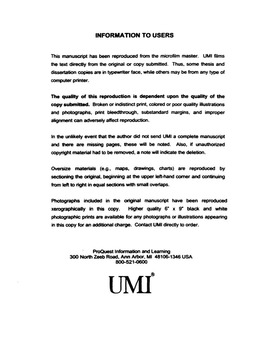| dc.contributor.advisor | Lobban, Lance L., | en_US |
| dc.contributor.author | Dreyer, Martina Irmgard. | en_US |
| dc.date.accessioned | 2013-08-16T12:18:30Z | |
| dc.date.available | 2013-08-16T12:18:30Z | |
| dc.date.issued | 2002 | en_US |
| dc.identifier.uri | https://hdl.handle.net/11244/430 | |
| dc.description.abstract | Reducing air pollution, specifically volatile organic compounds, has become an increasing concern for the public, environmental protection organizations, and governmental agencies. One method for destroying air contaminants that can meet desired characteristics such as working at ambient conditions (e.g. room temperature, atmospheric pressure, and use of oxygen from air as oxidizing agent) is photocatalytic oxidation. Anatase titanium dioxide has shown to be the most promising active photocatalyst for decomposition of air contaminants such as carbohydrates, volatile organic compounds, and odorants to harmless products like water and carbon dioxide. This work presents some new forms of photocatalysts that could significantly improve the available technology for photocatalytic degradation of air contaminants. | en_US |
| dc.description.abstract | Pure low density as well as ultra-low density titanium dioxide aerogels have been synthesized in our labs and several tests of photocatalytic activity of the TiO2 aerogel catalysts have been carried out using methane, ethane, ethylene, and acetone as air contaminants. The same tests have been carried out on Degussa P25, a TiO2 containing 70% anatase and 30% rutile. The effectiveness of the aerogels in removing the here-applied contaminants is compared to the commercially available P25 on several different bases (mass, illuminated cell window area, and UV accessible catalyst volume and catalyst surface area). The superiority of the aerogel was attributed to a larger fraction of interior surface, to the high porosity resulting in a higher accessibility of reaction sites, as well as to a higher UV light penetration into the catalyst bulk. UV transmittance measurements of dispersed catalyst powders in a UV-transparent agar gel showed that all aerogel samples demonstrated a higher UV light transmittance compared to the nonporous Degussa P25, thus allowing for UV light to penetrate five times deeper through an aerogel material compared to Degussa P25. | en_US |
| dc.description.abstract | Ethylene photooxidation under humid conditions showed a decrease in photocatalytic activity of all tested catalysts. But even at a relative humidity close to 50%, the aerogel photocatalyst retained good photocatalytic activity. | en_US |
| dc.description.abstract | The adsorption equilibrium constants and the reaction rate constants for methane, ethane, ethylene, and acetone were determined from initial rate data using a Langmuir-Hinshelwood model. The obtained models provided satisfactory fits to the experimental data. | en_US |
| dc.description.abstract | The aerogels' activity was further enhanced by thermal treatment and by the deposition of platinum. A platinum content of 1.2wt% increased the ethylene oxidation reaction rate constant by 35% for the Degussa P25 and by 11% for the aerogel T36. | en_US |
| dc.format.extent | xxix, 356 leaves : | en_US |
| dc.subject | Engineering, Chemical. | en_US |
| dc.subject | Indoor air pollution. | en_US |
| dc.subject | Titanium dioxide. | en_US |
| dc.subject | Aerogels. | en_US |
| dc.subject | Engineering, Civil. | en_US |
| dc.title | Titanium dioxide aerogels as photocatalysts for indoor air decontamination. | en_US |
| dc.type | Thesis | en_US |
| dc.thesis.degree | Ph.D. | en_US |
| dc.thesis.degreeDiscipline | School of Chemical, Biological and Materials Engineering | en_US |
| dc.note | Major Professor: Lance L. Lobban. | en_US |
| dc.note | Source: Dissertation Abstracts International, Volume: 63-01, Section: B, page: 0387. | en_US |
| ou.identifier | (UMI)AAI3040846 | en_US |
| ou.group | College of Engineering::School of Chemical, Biological and Materials Engineering | |
